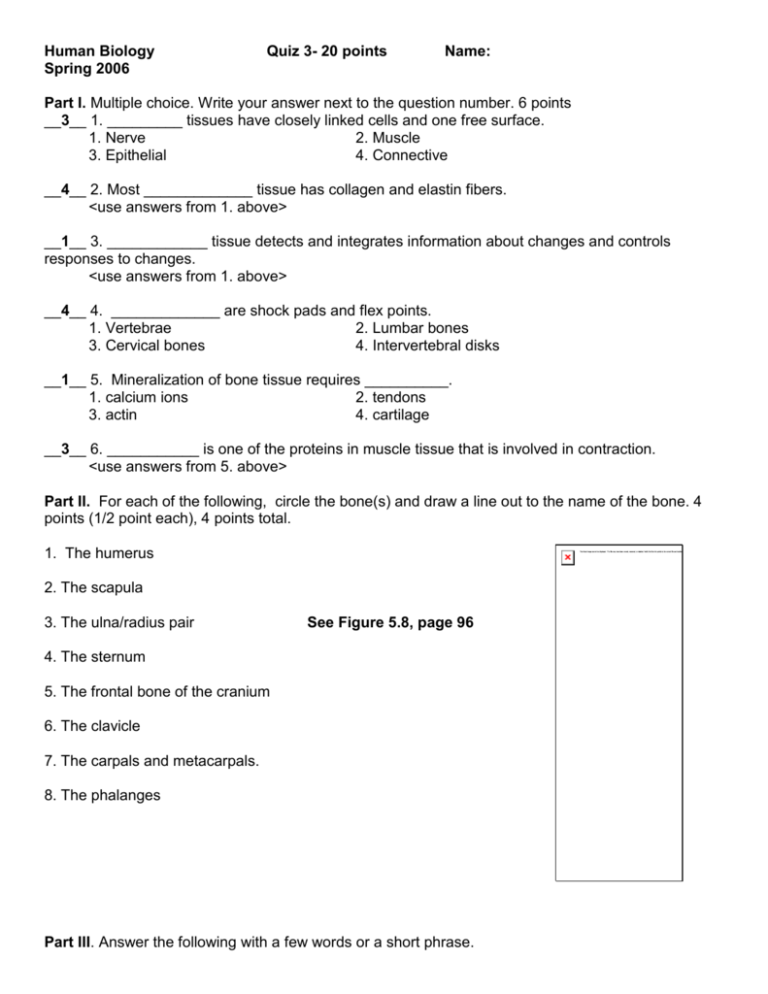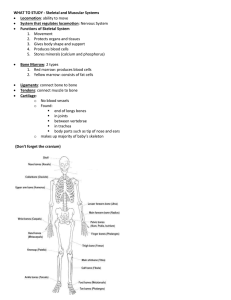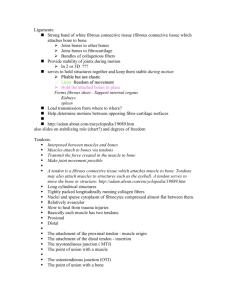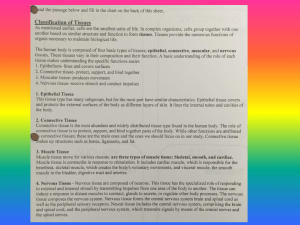Human Biology Quiz 3- 20 points Name: Spring 2006 Part I. Multiple
advertisement

Human Biology Spring 2006 Quiz 3- 20 points Name: Part I. Multiple choice. Write your answer next to the question number. 6 points __3__ 1. _________ tissues have closely linked cells and one free surface. 1. Nerve 2. Muscle 3. Epithelial 4. Connective __4__ 2. Most _____________ tissue has collagen and elastin fibers. <use answers from 1. above> __1__ 3. ____________ tissue detects and integrates information about changes and controls responses to changes. <use answers from 1. above> __4__ 4. _____________ are shock pads and flex points. 1. Vertebrae 2. Lumbar bones 3. Cervical bones 4. Intervertebral disks __1__ 5. Mineralization of bone tissue requires __________. 1. calcium ions 2. tendons 3. actin 4. cartilage __3__ 6. ___________ is one of the proteins in muscle tissue that is involved in contraction. <use answers from 5. above> Part II. For each of the following, circle the bone(s) and draw a line out to the name of the bone. 4 points (1/2 point each), 4 points total. 1. The humerus 2. The scapula 3. The ulna/radius pair See Figure 5.8, page 96 4. The sternum 5. The frontal bone of the cranium 6. The clavicle 7. The carpals and metacarpals. 8. The phalanges Part III. Answer the following with a few words or a short phrase. 1. The body moves because of which two organ systems? 2 points. Primarily Muscle and Skeletal, but with out the Nervous system, they couldn't move, so I'll accept any two of those three systems. 2. Where is blood formed? 1 point Blood is formed in the bone marrow, and that is why it is considered a specialized connective tissue. Part IV. Fill out the following table for the three types of muscle tissue. Name of the Muscle tissue type 4 points. Characteristic of this tissue Smooth Muscle found in arteries, intestines and other internal systems Cardiac Heart Skeletal Muscle Connected to bone with tendons Part V. The following diagram refers to a general negative feedback control loop. Write the appropriate name or action in the numbered boxes. 3 points.











